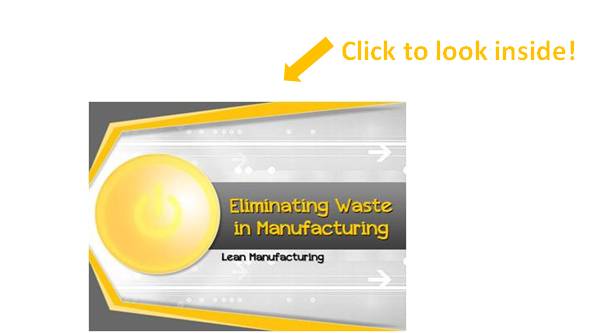Wouldn’t it be nice if we could eliminate all of our problems so that life would be much easier?
Well, I’m sorry to say that probably won’t happen…but there are ways to help solve some of the glaring issues so that life, or businesses, could run more efficiently.
Although the concept of Lean Manufacturing seems easy, eliminate waste to improve the overall value, implementing it takes focus, teamwork and diligence. The idea behind Lean Manufacturing is to streamline your production by reducing defects throughout the process. It’s a production practice that focuses on continuous improvement to achieve the highest throughput using the least amount of inventory. Ultimately by doing this, the quality and value will increase.
Lean is a set of philosophies, tools or techniques that improve production flow.

Reducing defects can be eliminating redundant processes, wasted time or improving bottleneck areas. The main goal behind Lean Manufacturing is to maximize customer value by minimizing waste. This can be the quality of the product, but also the quality of employees and working environments.
There are four components that make up the Lean framework:
1.) Lean Culture 2.) Lean Concepts
3.) Lean Planning 4.) Lean Tools
One of the tremendous benefits of developing a Lean Culture is the level of communication that opens up within a company. By communicating issues or concerns, and putting them all out on the table, everyone is on the same page. It also helps to take some of the friction out between groups. Everyone focuses as a team.

Lean Manufacturing is designed to empower the workers since they are the ones who work day-in and day-out on the equipment and have a better understanding of what might work better.
Lean Process Improvement Meetings are also beneficial because employees can discuss which methods were successful verses those that were not. By including employees in this problem-solving process, they become invested in the outcome because it’s their ideas. Information and data should be organized and can be placed in graph, chart or paragraph form to visibly show progress or areas that need improvement.
Benefits of implementing a Lean Culture:
- Employee Development
- Identify leaders that might not have stuck out before
- Employees/Leaders rally their teams around the objective
- Employees take ownership
- Employees know their roles
- Daily accountability
- Initiates positive changes in the working environment
Here’s a little advice to get employees energized and ready for the day!
Start each morning off by...
- Employees form a circle
- Manager/leader walks around to shake each person’s hand and engage with them
- Warm-up by stretching
- Discuss safety issues
- Open the floor for discussion
Employees should be encouraged to bring up any issues or concerns they might have in order to solve them as a group. Open-floor means they are free to voice their thoughts without being penalized.
During these meetings, employees can discover ways to work smarter, how to improve safety measures during production or even which snacks they prefer in the vending machines. All of these issues, big or small, matter.
One thing to understand about the Lean process is that it is continuous; there is always room for improvement.

